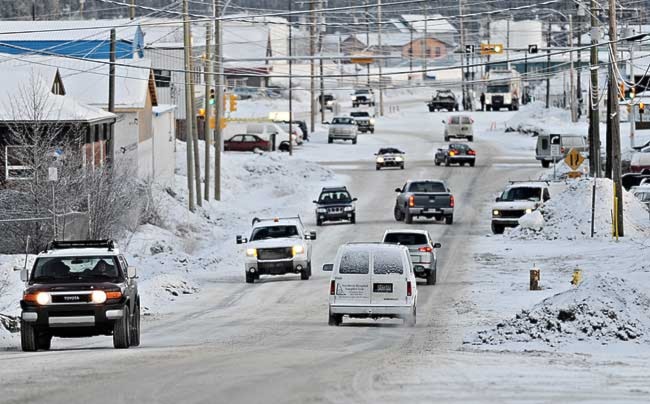At least one Whitehorse resident says the city’s local improvement charges are not being applied equally to all.
And the city admits he has a point.
Nathan Millar and his Black Street neighbours will each have to pitch in about $11,000 for improvements to their road.
Many of these people don’t want all the city’s suggested improvements.
What they do want is better water pipes underneath the road, but the city says they can’t have the pipes without pavement, sidewalks, curbs and landscaping.
Those are the rules laid out by the Yukon Municipal Act, say city politicians.
The law also says the city can recover a portion of its costs through a local improvement charge assigned to the residents.
But the rules for when and how such a charge can be applied are foggy.
It’s something Millar has been noting from the beginning.
Now, despite the fact that council has approved the project, Millar still wants answers.
And Monday, he explained why.
Council has approved its 2011 to 2014 capital budget.
In it, there is $2.4 million to fix the road, sidewalks, gutters, sewers and curbs on Industrial Road from Two Mile Hill to Quartz Road. There’s no local improvement charge levied.
But it is the exact same work Millar and his neighbours are paying for on Black Street.
So why do Black Street residents have to pay but the property owners on Industrial Road don’t have to? he asks.
They are mainly businesses that demand good roads for the high volume of traffic they attract, whereas many Black Street residents like the nostalgic character their unpaved roads and boulevards create, he adds.
And he’s not finished.
In 2008, the city tried to impose an local improvement charge on the work on Industrial Road. A majority of property owners voted it down.
Now, three years later, it’s back on the table, but at no cost to the property owners.
“That is true,” says Robert Fendrick, director of administrative services. “Although they’ve been used a lot in Whitehorse, Mr. Millar makes a good point that we do not have established, documented criteria as to what qualifies a local improvement charge and what does not.”
But the municipal act gives city council the authority to do what it wants when it comes to assigning a local improvement charge or managing its other resources to pay for improvement work, he says.
When it comes to the local improvement charge requirements, if council considers the specific area will benefit more than the whole municipality, they can charge the affected landowners.
It was written into the act in 1998, so the law hasn’t changed since the city tried to charge Industrial Road residents in 2008.
But the town has changed, says Fendrick.
“I know it’s not a big period of time, but three years later, considering the increased traffic flow to the area and considering the increased traffic flow that will come as a result of Whistle Bend - which is very certain now that that’s going to happen - it was judged by administration and recommended by administration to be arterial in nature, meaning it’s going to benefit the community if that road is upgraded more than it’s going to benefit the abutting landowners,” he says.
“There’s no question the abutting land owners will benefit, it’s just a question who benefits more.”
Following Millar’s pointed questions, Fendrick has asked for research into the criteria other muncipalities have for local improvement charges.
It should be better documented and more transparent, he says, adding that it should even be accessible on the city’s website.
He hopes to bring forward better, clearer policy by the end of this fiscal year for council’s approval, he says.
If they don’t, the city will continue with the existing rule, which is a judgment call, he says.
“The system, really, right now, leaves it in council’s hands and if a future policy was brought forward, it would still be in council’s hands but there would be some criteria to measure it against,” he says.
Contact Roxanne Stasyszyn at
roxannes@yukon-news.com
